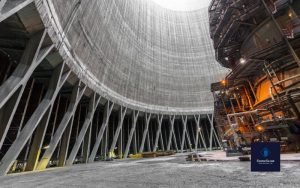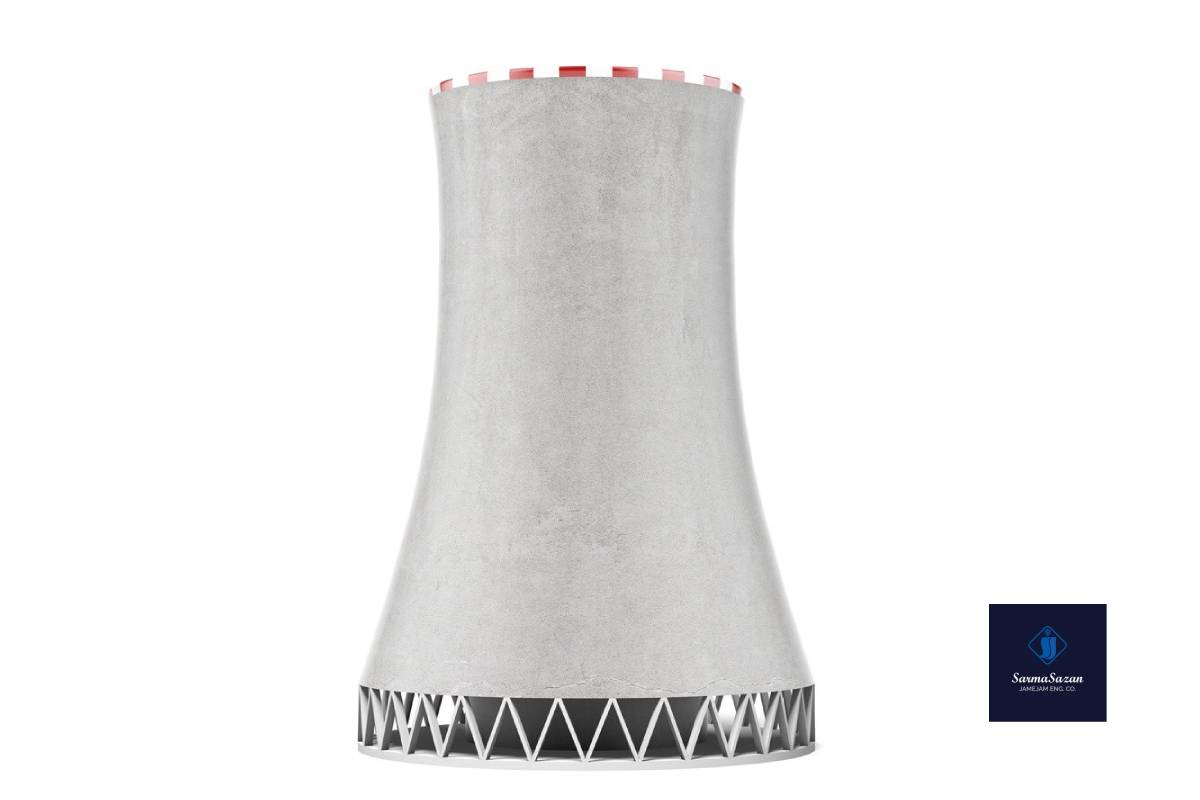Structural shape of nuclear cooling towers
The shape of nuclear cooling towers is usually hyperbolic, to the point that it is iconic in the form of nuclear power plants. The choice of this shape is due to the fact that its high width accelerates the evaporation process and also that the nature of the hyperbolic shape of these towers increases the efficiency of the tower; Because the hyperbolic shape of the tower helps the air flow from the bottom of the tower to the top. The structure of the flow is the pressure difference at different heights. In fact, it is the geometric shape of the hyperbolic tower that diverges and converges, creating a pressure difference. Finally, it should be noted that the natural flow in the nuclear hyperbolic cooling tower reduces energy consumption and provides high efficiency with its high capacity. This high efficiency causes the largest temperature difference between inlet and outlet water to be seen in these towers.
Hyperbolic towers are made of concrete and in very large dimensions, and naturally, the higher their height, the higher their capacity. Hyperbolic towers are expensive but safe towers that are used for sensitive industries and uses.
Another thing that goes back to the shape of this tower is its closed circuit. Cooling towers in terms of circuit structure and assembly are divided into subcategories of closed and open circuit cooling towers. The closed current does not put water in direct contact with the air all the time and uses coils. The converters used in the hyperbolic cooling tower are pipes and fins that are installed at the lowest level of the tower, which can be made of copper or galvanized steel.
Collectively, this form of tower is designed to meet the scale of nuclear power plants at the lowest cost, highest capacity, and highest efficiency.

Nuclear cooling tower operation
The cooling tower was used in shorter applications such as chillers, it was responsible for cooling the condenser. Here, too, the cooling tower is responsible for cooling the condenser and, in addition, cooling the water of boilers and turbines in high dimensions. This means that hot water enters the tower from the condenser and then the temperature inside the tower decreases and enters the condenser again in a cooled form. But if we want to find traces of this hot water, we still come to the heating activities of the power plant. With the heating activities inside the power plant, a large volume of hot steam is produced. This hot steam enters the turbine and then enters the condenser and generator. From there it reaches the cooling tower.

Hyperbolic nuclear cooling tower flow
There are generally three types of flows for cooling towers:
- Natural flow
- Mechanical current (forced and inductive)
- Composite flow
The hyperbolic core cooling tower uses natural flow to do its job. This means that such towers do not use any impellers or suction fans or devices that cause air to flow. When water is sprayed inside the tower, air flows naturally. Therefore, in some cases, this current may be affected by natural factors. Because no mechanical aids are used for the flow. But these events are largely controlled by high monitoring of tower performance.

 English
English  فارسی
فارسی 



